As June bleeds into July, it’s hot in Florida. The heat rises from the earth, hour by hour, as if you stepped into a sauna. Relief comes early or late, before the first cup of coffee or an after hour after the last glass of iced tea, as the sun eases below the dunes.
I measure the seasons by my fly-fishing calendar. Each season brings a new species. It’s now too hot for redfish and seatrout. Pretty soon, the tarpon and snook will arrive.
It was the same with freshwater, when I lived in Virginia. March is perfect for brook trout in the mountain streams. The brown trout of the spring creeks begin to stir when the grasshoppers stir in August.
As I reflect upon three decades with a fly rod, I learned lessons from each species. The brook trout, a feisty but forgiving fish, taught me how to read a small stream. Browns taught me the art of a precise presentation.
The snook was my saltwater teacher. As I made the transition from fresh to salt chasing redfish, I had a lot to learn. Of course, I didn’t think so at the time. I remember when I figured out the seasonal patterns on tailing reds, it was a pivotal moment that I assumed would lead me to consistent saltwater success. But I was wrong. Dead wrong.
The Art of Patience
Beach snook have a way of bringing a man to his knees. A few years ago, I arrived in South Florida in October. Juno Beach, 10 minutes south of Jupiter, is one of the premier surfing spots on the East Coast. It’s also a haven for big snook, which arrive as early as June and stay until early fall.
The water, at times, is gin-clear. When the surf flattens out, sight-fishing conditions are damn near perfect. Yet, I walked the beach almost every day for a month and didn’t see a single fish. Not one.
It reminded me of hunting for ruffed grouse. When I first started, I walked the mountain logging trails almost every day. Snow, ice didn’t matter. I hunted. And I didn’t see my first bird until the last two days of my first season. By then, I was too worn out to shoulder my 20-gauge.
As I walked the beaches of South Florida, I vowed I would not let that scenario happen again. But, despite my best efforts, as early November arrived, the surf became too rough to see a fish. Five months of doldrums followed.
But I stayed the course. By April, I was walking the beach again. The surf was still a bit too strong to see beneath the surface. But I learned to see what I could. The water near the first break still churned, but the foam near my feet yielded small windows of visibility. Opportunities for clarity lasted but a few seconds, but I kept looking, and finally small black shadows crossed the patches of white sand.
The first snook of the season arrived and all I could do was watch. I stood there without making a single cast, relishing the moment.
The Art of Perseverance
It wasn’t long before I started taking shots. The first snook, as I later learned, were males. They were fun targets and served as a source of vindication, but they weren’t big eaters. To complicate matters more, the surf was in seasonal transition, between spring and summer. One day it was fishable. The next it was surfable. There was no consistency.
In retrospect, it’s a pretty obvious trend, but it took daily walks on the beach to recognize the obvious.
My motivation came from my personal life. My newspaper career was over. My marriage, almost simultaneously, took a similar path.

Walking the beach with a fly rod became my therapy. I had a daily fishing plan. I also had to figure out what the hell I was going to do with the rest of my life.
Walking alone gives you plenty of time to think. When I didn’t see snook, I thought about life. When I saw fish, the stress dispersed.
Unfortunately, there was no rhyme or reason when I saw fish and when I didn’t. As the first mullet arrived with the heat of summer, the snook started to show up more. Nevertheless, there were days when the wind and surf cooperated, but the fish did not. But I knew if I kept walking, I’d see them. So I kept trying.
Although beach snook can be sparse, South Florida tourists and beachgoers are alarmingly consistent. The surge of snowbirds never seems to end. I had to find another place to fish.
Juno Beach was replaced by the Hobe Sound National Wildlife Refuge and its nearby beaches, which are known for their affluence. Tiger Woods, Greg Norman and Celine Dion have homes in the area.
The Refuge, however, is a haven for the local counterculture. Because the beach is so remote, swimwear, at least for some, is optional. So you never know what you’ll see—or what you won’t see.
What you will see are big tarpon and snook. Both species pound baitfish up against a steep drop a few feet from the dry sand, creating an ideal scenario for fly fishermen, who traditionally come from as far as south as Miami to take their shots, even though the Florida Keys are equally close to home.
Even though the Juno Pier was minutes from my house, I made the 40-minute drive to Hobe Sound. I knew it would be worth it. And one day it was.
A school of five monster snook made their way from the north, cruising in line with a secondary break. They were too far away to cast from the sand. I knew I might be able to reach them, but the wave action and the geometry of the presentation dictated that I go to the fish.
I waded out to thigh-deep water and waited. Once the shadows appeared, I timed a head-on shot in between waves and stripped twice when the tight tightened. With the fish securely hooked, I began to back up toward the sand, where I landed the big female while a beach walker watched from afar.
“I can’t believe you even saw that fish,” she said.
I nodded. I couldn’t believe I caught that fish. A few months ago, I might not have seen it, either. It was early afternoon, still plenty of time to fish, but I walked back to my Jeep and left for home. My journey was complete.




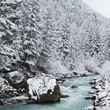






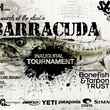
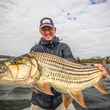


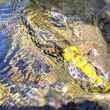
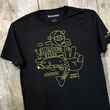



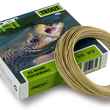
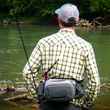



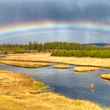
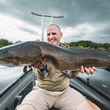

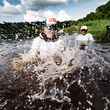
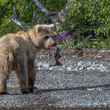
Comments
West Coaster replied on Permalink
Thanks for sharing your experience, really enjoyed the article. What set-up & flies did you use? Thanks.
Pages